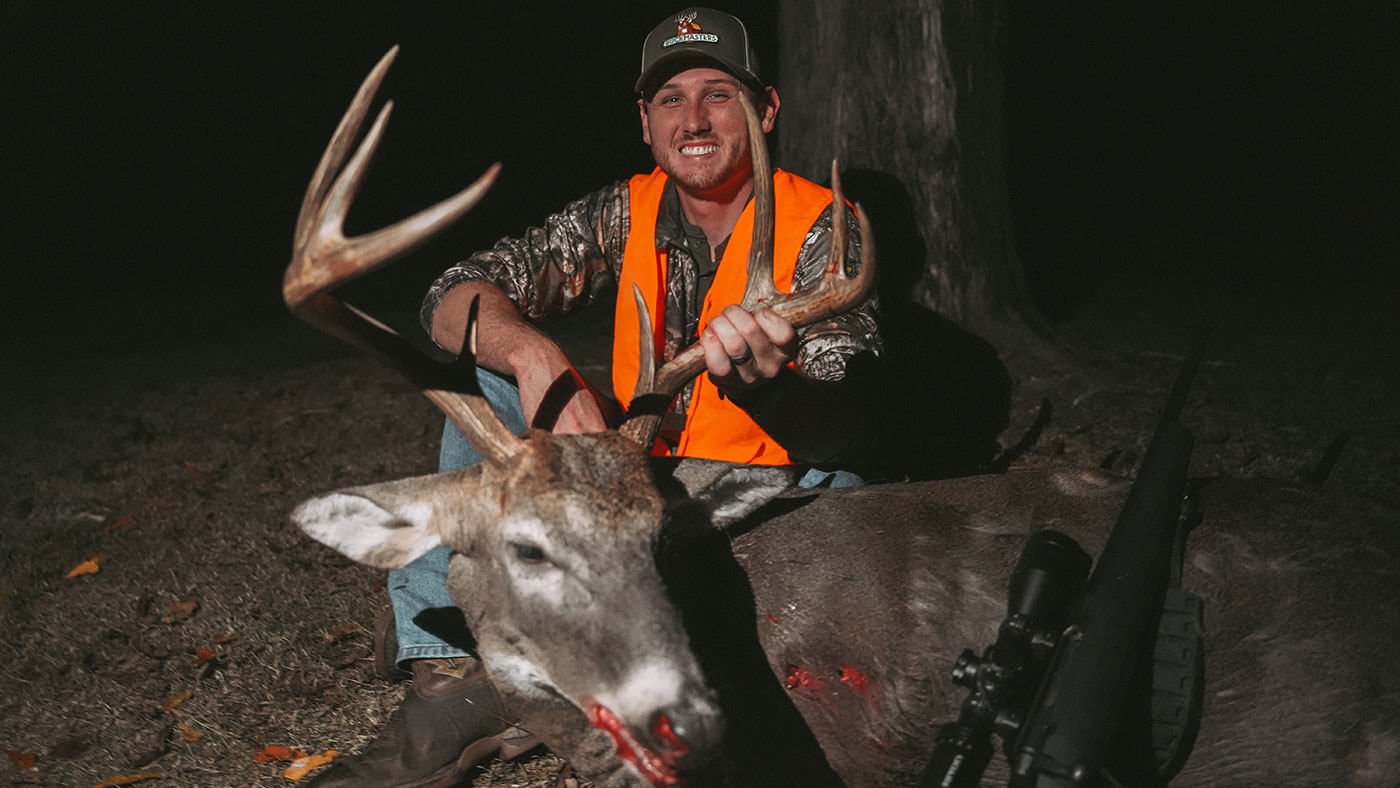- Savage Blog
- Tips for Deer Hunting from Buckmasters
Tips for Deer Hunting from Buckmasters

There is nothing like waking up on a cold fall morning, gearing up and hitting the woods for the first hunt of the season! How successful you are can only be measured by what your expectations are for that hunt. Harvesting your target buck can mean being at the right place at the right time, or some might even call it luck. To help increase your success, check out these tips for deer hunting brought to you by Buckmasters.
Tracking & Recovery

After shooting a deer, what you do in the next few minutes can play a critical role in whether, or how easily, you recover it. Do NOT rush to begin tracking. Give the animal time to expire. Waiting at least 30 minutes is good, but an hour is better. Avoid calling in half the county to help track; too many people can cause confusion and ruins sign. As you find blood, mark it with flagging or something you can go back to. Bright, bubbly pink blood indicates a lung shot, while dark blood usually comes from muscle damage. Knowing when to begin tracking comes with experience and accurately analyzing the shot in your head. When in doubt, wait. Once that animal is jumped, the likelihood of recovery plummets.
Best Blind Snacks

When hunting out of a ground blind, you can sometimes get away with more movement than you can while aloft in a tree stand. Take advantage of that and be comfortable, and that includes indulging in a few snacks. Trail mixes are good choices for high protein and nuts. If you have a sweet tooth, peanut M&Ms are hard to beat, although you probably wouldn’t want to mix them with other sugary snacks. Choose snacks you can eat quietly, provide energy, and stick with you. It’s usually best to remove snacks from their original, often-loud packaging and put them in sandwich bags. This cuts down on noise and allows you to seal away the scent when you’re done eating.
Scent-Safe Stands

Do you agonize over where to hang your stands? Most of us tend to overthink stand placement. Whitetails’ lives revolve around three things (four if you count mating, but that’s not a year-round drive): food, water, and cover. Position your stands to intercept travel between these areas and set up so you can observe this activity from downwind. That’s about it. Something many hunters don’t think about enough, however, is whether they can get to and from their stands without alerting deer. The best location in the world won’t produce if deer know you’re there. To sum up, set up on travel corridors between food, water, and bedding. Pick stand sites that allow you to sit without being smelled, and ones you can get to and leave quietly and scent-safe.
Sight In

Save ammo and time when sighting in your gun or crossbow by using the shoot-and-chase sight-in method. Using a Lead Sled or similar rest, fire your gun at a target. Keep looking through the scope and try not to allow anything to move. With the crosshair centered in the bullseye, have someone* turn your scope dials until the crosshair is in the center of the hole you just shot. That’s it. You’re now sighted in at that distance (although you always want to shoot a few more rounds to make sure). You’ll only be off by the amount you moved the gun since you fired the shot. It’s nearly impossible to eliminate 100% movement, but this method will get you very close and save you a lot of shooting.
*Note: You can make the scope adjustments yourself, but it’s really difficult to keep the gun still while looking through it and simultaneously turning the dials.
Dress for Success

Early season or late season, dressing for the weather is key to whether you remain comfortable and still in a deer stand. We work up a lot of heat walking to our hunting spots, and even more climbing into elevated stands. The sweat generated from these exertions can get you scent-busted in the early season, and the shivers you get from being sweaty later in the fall as you sit in cold weather can cause you to pack it in early. You can minimize these effects with two easy hacks. First, take your time walking in. Go slowly and take lots of breaks. If it’s an afternoon hunt, look for deer sign or even deer. Second, carry most of your hunting clothes in a scent-free bag like a roll-top dry bag. The bags weigh next to nothing and can be clipped to your waist or your backpack when full and stuffed in your pack when empty. It’s okay to feel chilly when you first start your walk; you’ll warm up as your heart gets to pumping.
Pattern Food and Water Sources

When it comes to scouting for whitetails, good places to start include obvious game trails, pinch points or heavy cover. That said, food and water sources are ultimately the best. Deer always need food and water. The key is determining which food and water sources are appealing at a given time of the season. Place game cameras on the current hot food sources, and on food that becomes more appealing throughout the fall. Patterning hotspots of deer activity will help you pinpoint the best stand locations and keep you on the deer throughout the entire season.



